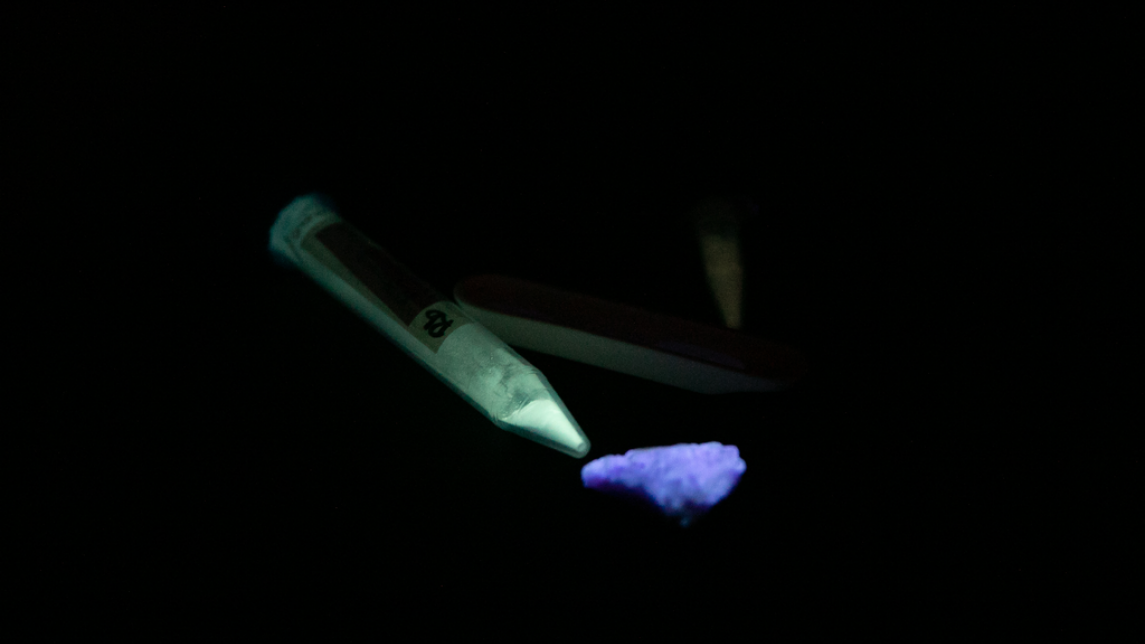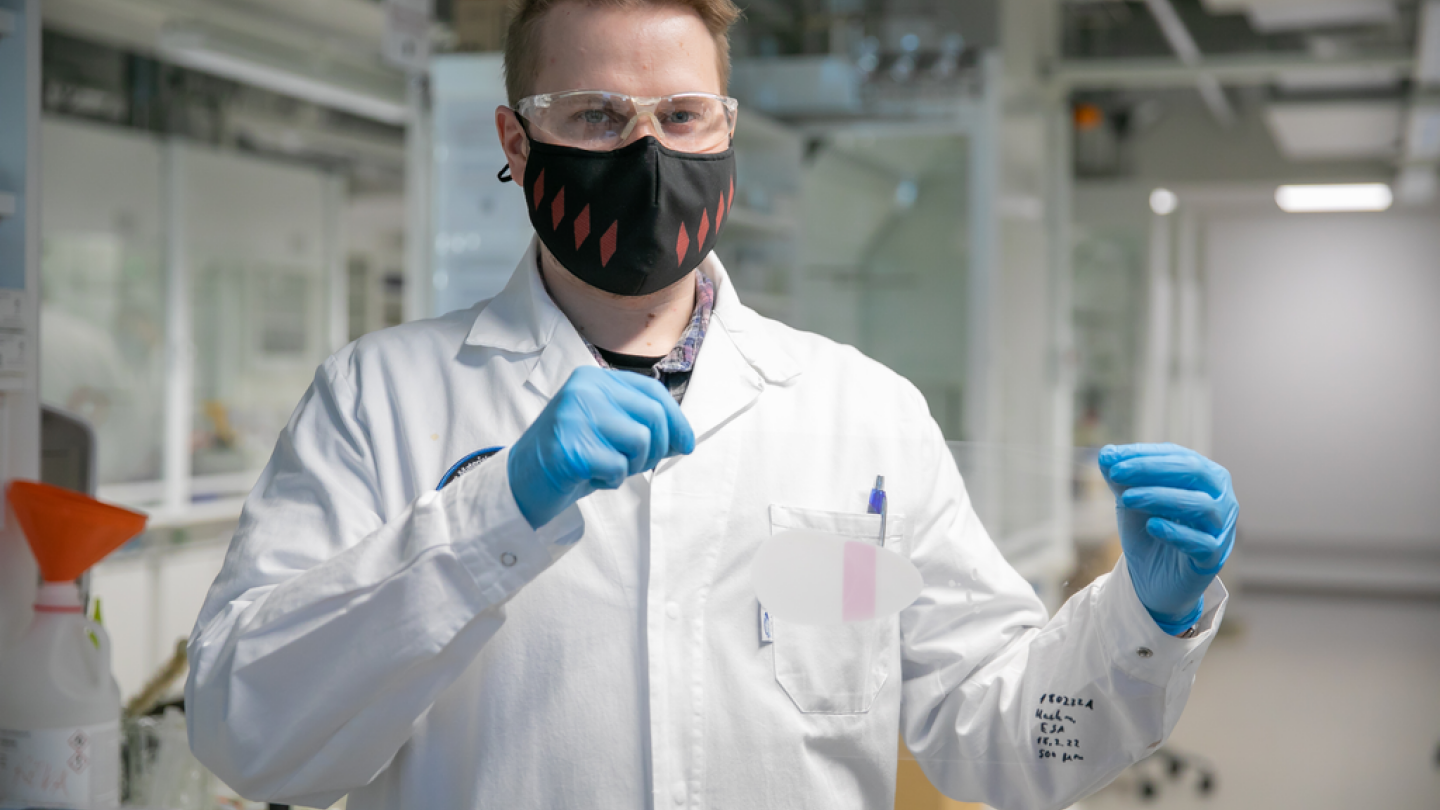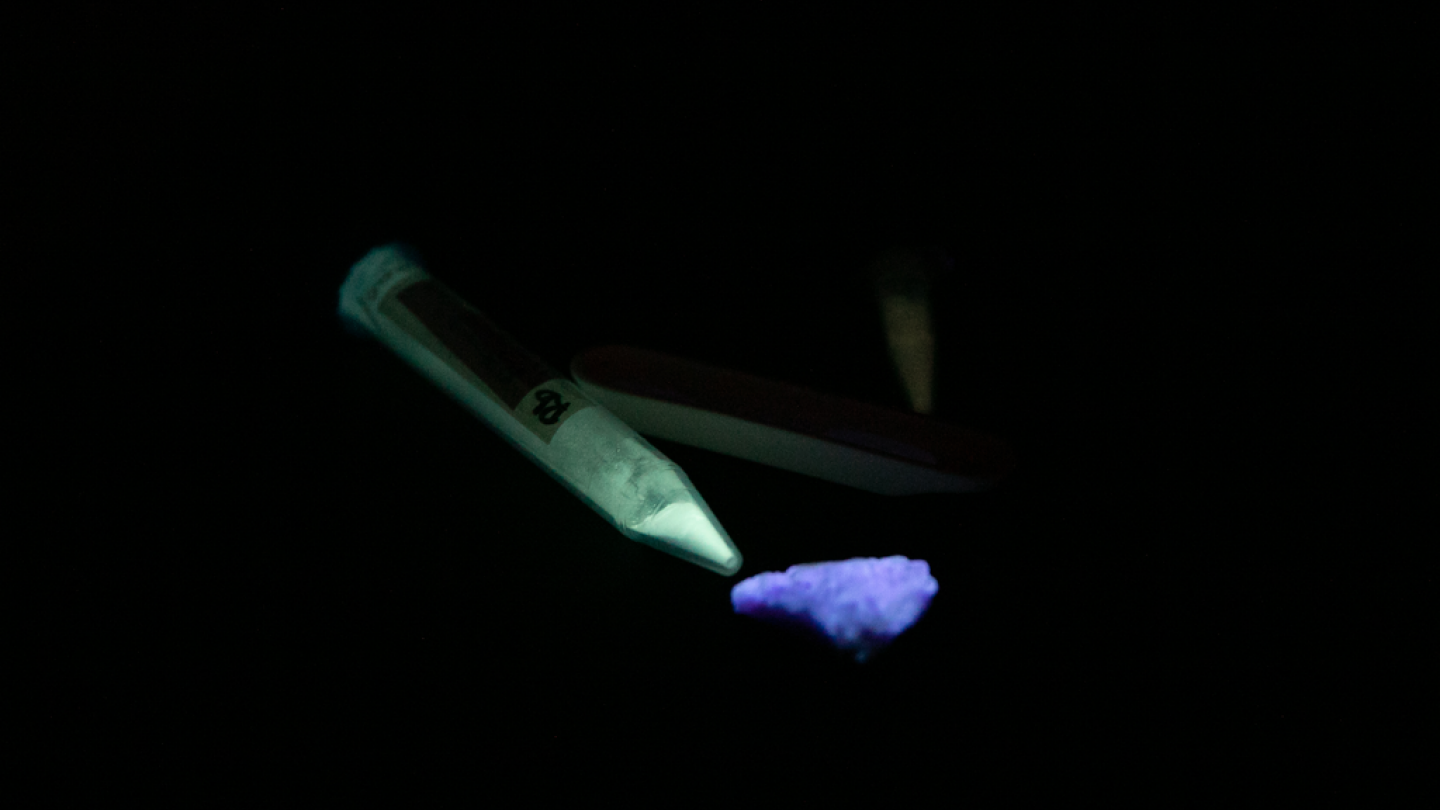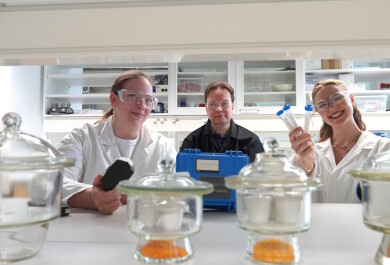Researchers from the University of Turku are developing a new hackmanite-based dosimeter and passive detectors for the International Space Station, intended to be used to measure the radiation dose uptake of materials during space flights. The year-long research project is funded by the European Space Agency, ESA.
The research project funded by the European Space Agency (ESA) studies the usage potential of the colour-changing synthetic hackmanite developed at the University of Turku for the International Space Station (ISS).
In the project, the researchers investigate how artificially produced hackmanite is suited to detecting the UV radiation different materials used in space are exposed to, and determining the doses of radiation passively, without power consumption.
The preliminary objective of the project is to deliver hackmanite plates to the ISS during 2023.
Amongst other things, the researchers are studying how well the developed synthetic material works in a vacuum and temperature changes ranging from -150 to +150 degrees Celsius, equivalent to the conditions on the orbital path of the ISS. They are also studying methods for reading the radiation dose the hackmanite has been exposed to as easily, precisely and accurately as possible from its colour.
“Current radiation dosimeters require electricity and are expensive and difficult to install. This is why well-functioning and cheap passive detectors and dosimeters, which do not require electricity, would be important for the development of new materials for use in space. Hackmanite could offer a solution to this, as we know so far that the mineral itself can tolerate large temperature changes,” says the project’s leader Professor Mika Lastusaari from the University of Turku.
Dr. Agnieszka Suliga and Dr. Adrian Tighe from the Materials Physics and Chemistry section of the ESA proposed the space station project to Lastusaari’s research group after noticing the group’s research article in the esteemed journal Materials Horizons.
“In Finland, there are typically no players who could compete in large scale production of materials or technology. Instead, our biggest asset is developing high-end expertise such as in hackmanite technology. This space technology project, for example, has its roots in a research article based on our Postdoctoral Researcher Isabella Norrbo’s doctoral dissertation,” explains Lastusaari.
The Research Group Develops and Optimises the Natural Mineral’s Best Qualities and Continues to Develop New Hackmanite Technology
The Intelligent Materials Research Group at the Department of Chemistry of the University of Turku, led by Lastusaari, has long conducted pioneering research of materials with light and colour-related properties. The group specialises in the study of hackmanite, a rare mineral found in nature, and has developed methods for manufacturing it synthetically.
“Our material has its roots in nature, but only by using its synthetic form can we utilise its amazing properties. By producing it artificially, we can better control the material’s properties and enhance them compared to those of natural hackmanite,” says Lastusaari.
Hackmanite found in nature has the ability to change its colour from an off-white to pink or violet upon UV exposure. The research group has further developed these colour-changing properties in the artificially manufactured hackmanite and utilised them in many different types of applications. All hackmanite materials developed by the research group are free of toxins and can be recycled.
“The strength of the hackmanite’s colour depends on how much UV radiation it is exposed to, which means that the material can be used, for example, to determine the UV index of the Sun’s radiation. The hackmanite that will be tested on the space station will be used in a similar fashion, but this property can also be used in everyday applications. We have for example already developed a mobile phone application for measuring UV radiation that can be used by anyone,” explains Doctoral Candidate Sami Vuori.
According to Lastusaari, the energy threshold required to colour the hackmanite can also be adjusted. In this way, the material can be adapted to be sensitive to different types of UV radiation, i.e. UVA, UVB, and UVC radiation. The research group implemented proof-of-concept studies and developed the UV detection and its different applications in the SENSOGLOW project funded by the Finnish Funding Agency for Technology and Innovation (TEKES). In this project, they also developed a UV-detection app for smart phone use.
Hackmanite can also be adapted to be sensitive to X-rays. X-ray-sensitive hackmanite can be made into film that can be used in X-ray imaging plates. Seeing the image does not require expensive reading devices - the image is visible directly on the plate surface.
“Manufacturing synthetic hackmanite is quick and inexpensive, and the materials are reusable, which means that this type of technology would have a lot of potential in e.g. less developed countries and for passive detection. This would enable people to access imaging equipment and methods that would otherwise have been deemed too expensive,” says Doctoral Candidate Hannah Byron.
The X-ray radiation related properties of hackmanite and the commercialisation of its applications were developed in the HIPTech project funded by Business Finland, after which the researchers also established a start-up company, Pure Luminescence Technologies Oy, to commercialise hackmanite technology for different applications.
Natural Light Emitting Hackmanite Could Even Replace LEDs, Fluorescent Lighting and Energy-Saving Bulbs
Hackmanite is rare in nature, and natural hackmanite’s white luminescence is even rarer. The research group has also studied the potential of utilising this white light. Unlike any other currently used low-energy white light source, the spectrum of this light is continuous across the whole visible spectrum, which means that hackmanite’s white light is much like sunlight or incandescent light bulbs.
However, the white light from hackmanite does not produce heat, which means that it could be an energy-efficient and much more natural source of light than the systems currently in use. Moreover, its colour temperature can be adjusted from a warm to a cool white, which could make it appealing for manufacturers of lighting fixtures and light sources in the future.
“In traditional light bulbs, 80% of their power goes to producing heat and only 20% to white light. In white LED lights, fluorescent lights, and energy-saving bulbs, on the other hand, the white light is produced by combining two or three different colours, which our eyes perceive as white, but because these lights lack some wavelengths, their light is not equivalent to natural light. Hackmanite could also have significant potential as a material for light sources,” explains Lastusaari.
Lastusaari’s group has studied, developed, and commercialised synthetic hackmanite material and its manufacturing methods in several projects funded by the Finnish Funding Agency for Technology and Innovation (TEKES) and with Business Finland’s Business to Research (R2B) funding. The research group have created thus far seven different patent families to protect their technologies. Some of these have already been granted a patent in the United States and other countries.







